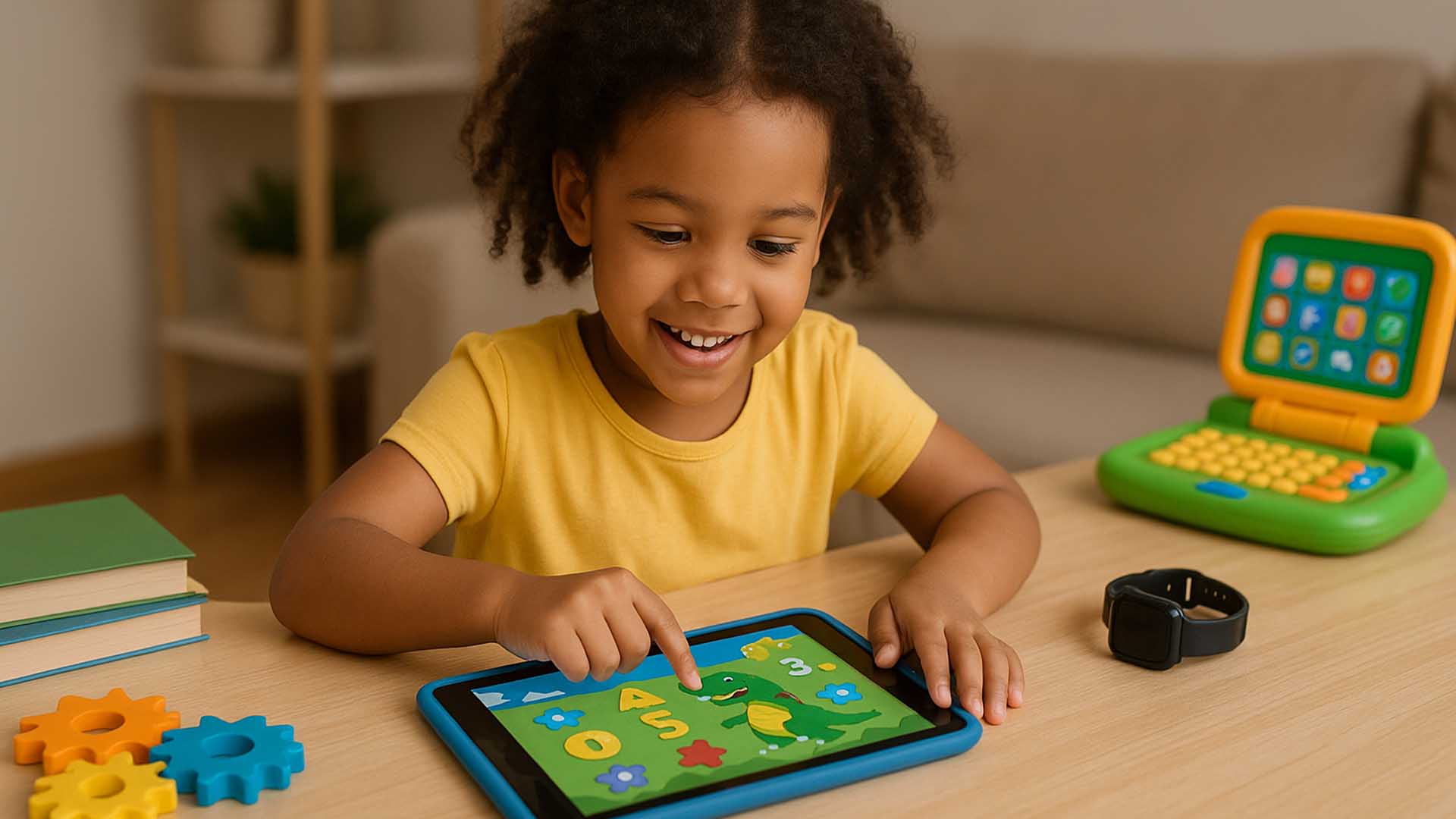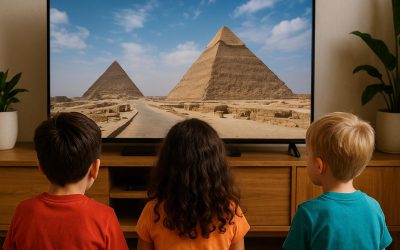In today’s rapidly evolving digital world, technology is an undeniable part of children’s lives. From educational apps to interactive games, digital tools offer exciting new avenues for learning and development. But how do parents ensure their children are engaging with technology in a healthy, age-appropriate way?
And what exactly is ‘gamified learning’ and how can it benefit young minds? This article explores the importance of age-appropriate tech and the power of gamified learning to make education fun and effective for children.
What is Age-Appropriate Technology for Kids?
Age-appropriate technology refers to digital devices, applications, and content that are designed to suit a child’s developmental stage, cognitive abilities, and emotional maturity.
- For toddlers (0-2 years), screen time is generally discouraged, with some experts recommending no devices at all [1].
- For preschoolers (3-5 years), limited screen time with interactive, educational content is often suggested.
- As children grow older (6-12 years), they can gradually be introduced to more complex tools like kid-friendly smartwatches and educational software, always with parental guidance and time limits [2].
The key is to select technology that supports learning and creativity, rather than passive consumption.
The Power of Gamified Learning
Gamified learning integrates game-like elements and principles into educational activities to enhance engagement, motivation, and learning outcomes. This isn’t just about playing games; it’s about using points, badges, leaderboards, challenges, and rewards to make learning feel like an exciting adventure [3].
For children, gamification can transform traditionally dry subjects into captivating experiences. For example, math problems can become quests, and reading exercises can turn into interactive stories.
Benefits of Gamified Learning for Children
Gamified learning offers numerous benefits for children:
- Increased Engagement and Motivation: The interactive and rewarding nature of games keeps children interested and eager to learn [4].
- Improved Cognitive Development: Many gamified platforms require problem-solving, critical thinking, and strategic planning, which can boost cognitive skills [5].
- Enhanced Retention: When learning is fun and interactive, children are more likely to remember the information [4].
- Development of Life Skills: Games can teach perseverance, resilience, and the ability to learn from mistakes, as children work through challenges to achieve goals [3].
- Personalized Learning Paths: Many gamified educational apps adapt to a child’s pace and progress, offering customized challenges and content [6].
Popular Educational Apps Utilizing Gamified Learning
Several apps successfully employ gamified learning principles to educate children:
- Khan Academy Kids: This free app offers a vast library of educational games, books, and activities for children aged 2-8, covering subjects like reading, math, and social-emotional learning [7].
- SplashLearn: Focusing on math and reading for ages 3-12, SplashLearn uses interactive games and rewards to motivate children [8].
- Duolingo: While popular for language learning across all ages, Duolingo’s gamified approach with streaks, points, and levels makes it highly engaging for older children and teens [9].
Q&A
Q1: How much screen time is recommended for young children?
A1: For children aged 0-2, most experts recommend no screen time.
For ages 3-5, limited screen time (around 1 hour per day) with high-quality educational content is suggested, always with parental involvement.
Q2: What are the signs that a child’s tech use is becoming unhealthy?
A2: Signs include excessive screen time interfering with sleep, schoolwork, or physical activity, withdrawal from social interactions, irritability when tech is removed, and a preoccupation with digital devices.
Q3: Can gamified learning replace traditional teaching methods?
A3: Gamified learning is a powerful supplement to traditional teaching methods, not a replacement. It enhances engagement and motivation, but a balanced approach that combines various learning strategies is most effective.
Sources
[1] Atlanta Parent – Let’s Talk Tech: Devices 101 – An Age-by-Age Guide: https://www.atlantaparent.com/lets-talk-tech-devices-101-an-age-by-age-guide/
[2] Aro – How to Choose Age-Appropriate Digital Devices for Your Kids: https://www.goaro.com/blog/how-to-choose-age-appropriate-digital-devices-for-your-kids?srsltid=AfmBOop06927esd1noROHuwXluvQaxkhgvSzpeuH51tTg3_oaq8Wmaxv
[3] Smithsonian Science Education Center – 5 Benefits of Gamification: https://ssec.si.edu/stemvisions-blog/5-benefits-gamification
[4] eLearning Industry – Gamification In Children’s Learning: Exploring The Impact: https://elearningindustry.com/play-learn-succeed-exploring-the-impact-of-gamification-on-childrens-learning
[5] AMISA – 5 Benefits of Bringing Gamification to Your Classroom: https://www.amisa.us/post/5-benefits-of-bringing-gamification-to-your-classroom
[6] Research.com – 15 Best Educational Apps for Kids for 2025: https://research.com/software/best-educational-apps-for-kids
[7] Khan Academy Kids on the App Store: https://apps.apple.com/us/app/khan-academy-kids/id1378467217
[8] Reddit – What’s the best educational app you’ve given your kids for their…: https://www.reddit.com/r/raisingkids/comments/1dp0z4f/whats_the_best_educational_app_youve_given_your/
[9] Duolingo Website: https://www.duolingo.com/








0 Comments